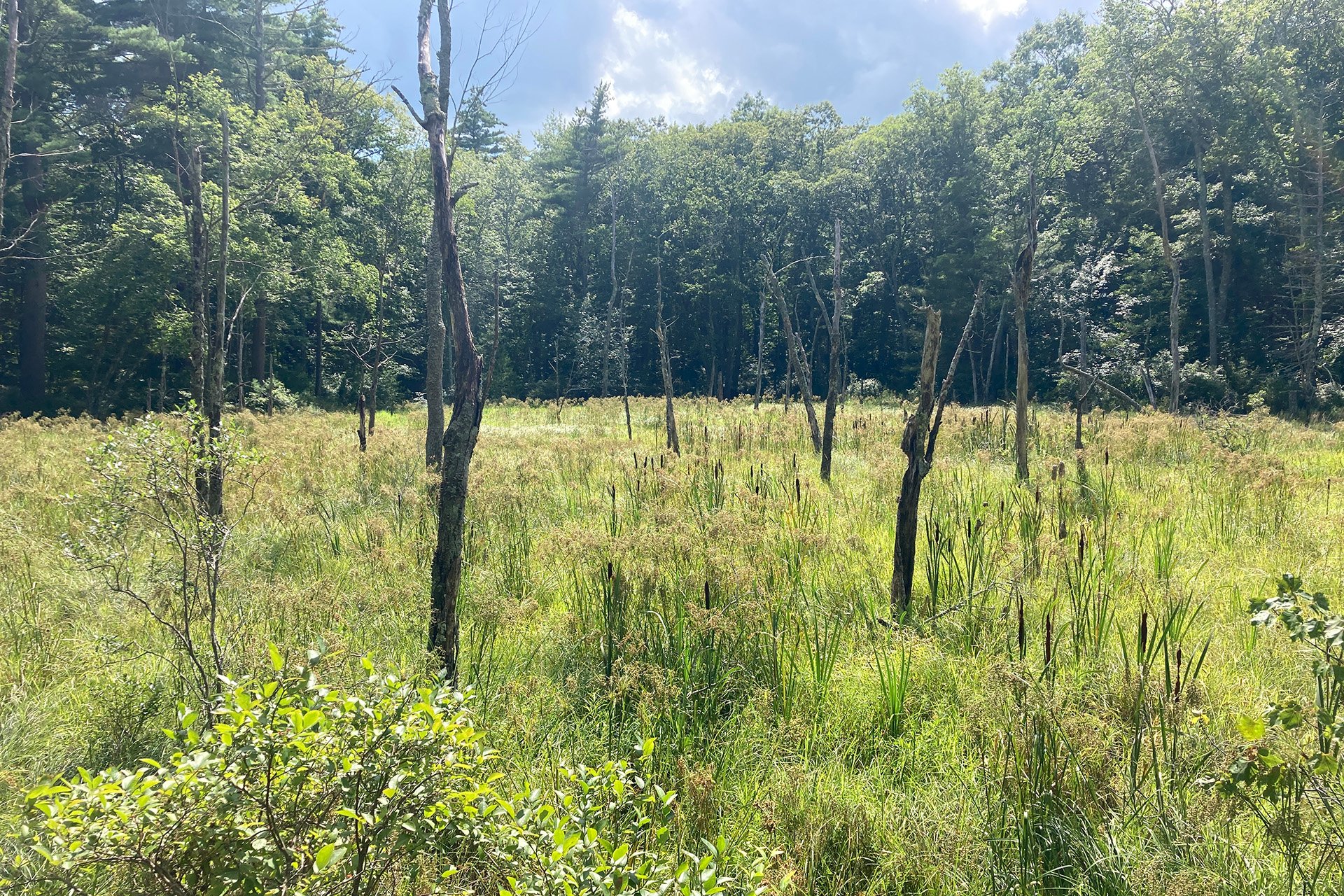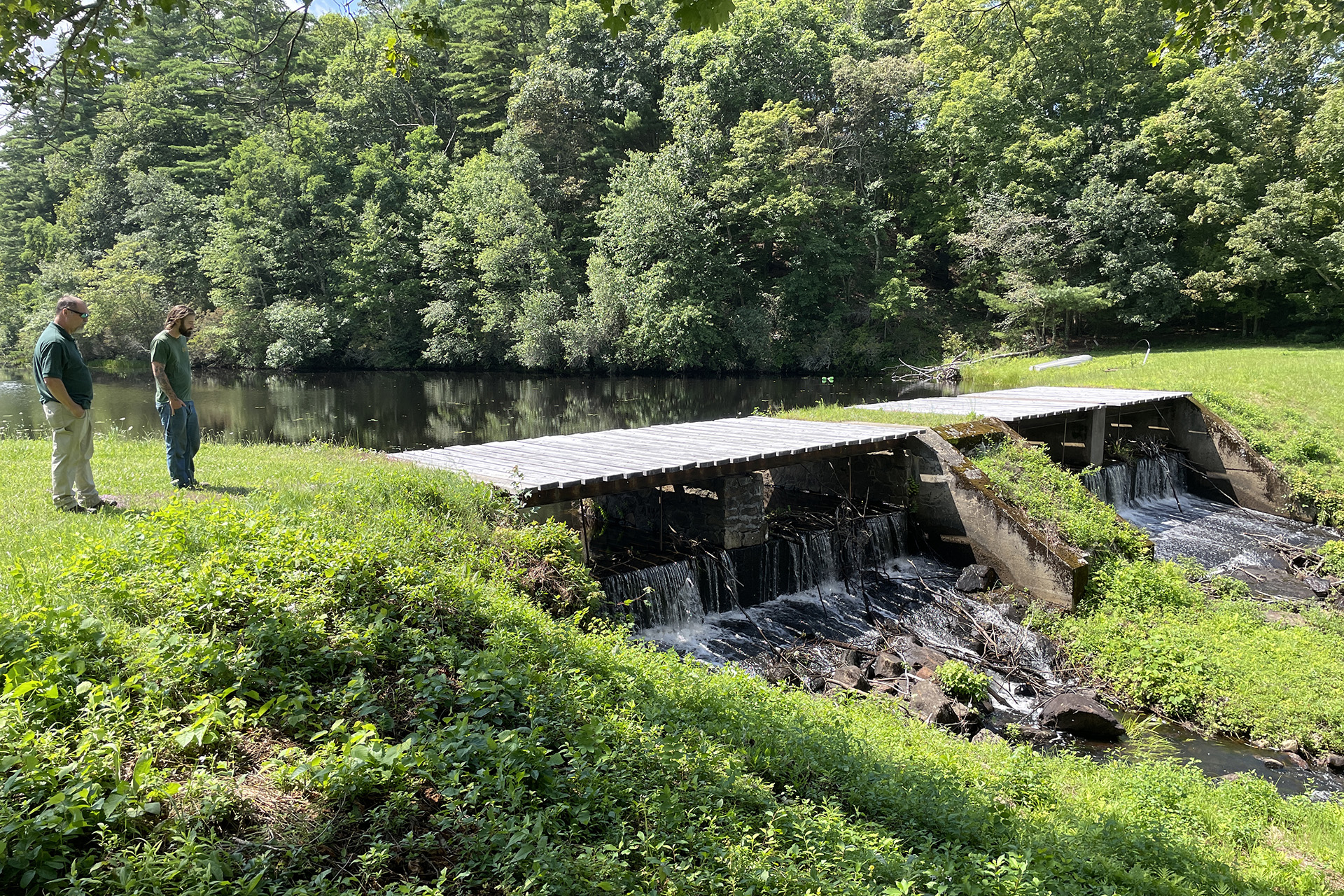Vinica Brook Watershed Restoration Project
The Vinica Brook Watershed Restoration Project represents an unprecedented effort in restoring aquatic connectivity.
It offers the potential to remove more barriers to fish and turtle migration than any other single project completed in Massachusetts to date.
By targeting the removal of up to nine dams and 50 culverts in the Vinica Brook Watershed, the project will open critical pathways for aquatic species, significantly enhancing ecosystem connectivity and resilience across the region. This work will reconnect cold water streams, re-establish beaver meadows and wetlands, and improve habitat for rare and threatened species across thousands of acres of forested land.
This biodiversity-focused project relies on a collaboration between Mass Audubon, the Norcross Wildlife Foundation, MassWildlife, American Rivers, and Stantec with more organizations likely to follow.
About the Landscape
The Norcross Wildlife Sanctuary, managed by the Norcross Wildlife Foundation, encompasses thousands of acres of protected forests, fields, wetlands, and streams. It includes Vinica Brook and associated tributaries, with over eight miles of state-designated coldwater streams and active beaver sites. Sanctuary visitors can witness numerous habitats along a well-managed educational trail system.
While spectacular, this landscape has been damaged and degraded from past land uses, including the numerous dams, culverts, and roadways that negatively impact the many miles of creeks and streams on the property.
Project Goals
We aim to increase biological diversity by restoring the streams and wetlands within the Norcross Wildlife Sanctuary. Our restoration approach centers on removing as many barriers that interrupt the stream network as possible, including up to nine dams, 13 miles of roadway, and 50 road-stream crossings.
The project team plans to encourage ecosystem recovery over time with minimal human intervention: channels and floodplains will reform naturally after dam removals, beavers will re-colonize former impoundments, and habitat supporting diverse plants and animals will expand. When complete, over 14-miles of streams will be connected and over 300-acres of wetlands will be restored.
Although this project will remove some of the infrastructure built by Norcross’s founder, Aruthur D. Norcross, the project partners see this work as furthering his original vision of restoring and protecting a large landscape for all wildlife. But with what we know today about ecology and the negative impacts of dams and culverts on wildlife, we are taking a different approach to this vision than Arthur Norcross did in the mid-20th century.
Removing Dams Restores Rivers
Long, linear ecosystems, rivers rely on the free movement of energy, material, and organisms to adjust and sustain themselves over time. Habitat features in a flowing stream result from the natural interactions between water, sediment, and large wood. Organisms like brook trout are attracted to places with ample shade, abundant insects and food, and cool water temperatures.
However, the presence of a dam in a river fundamentally disrupts natural ecosystem processes: it blocks organisms from migrating to seasonal refugia, traps wood and sediment, and causes water to warm and hold less oxygen. These impacts occur from a single dam—just imagine the impacts multiplied by the 3,000+ dams in Massachusetts.
Dam removal is one of the most effective ways to restore the health of river ecosystems. The positive effects are immediate and permanent, while the risks are short-term and easily assessed and controlled. Beyond the suite of ecological benefits, removing dams also addresses significant public safety hazards across our landscape. Most dams that exist today serve no active use, are well-beyond their design lifespan, and are structurally defective. For ecology and public safety, the removal of obsolete old dams makes sense.
Project Updates
In August 2024, biologists from MassWildlife and Mass Audubon joined staff from Norcross Wildlife Sanctuary to assess existing conditions and to see what fish are already present. The teams discovered many species of fish including brook trout. With this strong foundation, how many more fish could a free-flowing and connected stream network support?
In October 2024, Mass Audubon finalized a contract for the early phases of stream restoration design with Stantec Consulting Services Inc. Over the next 8 months, the team will work together to further define the project, determine what roads can be removed, how to remove the dams, and assess costs and next steps.
Support This Work
Mass Audubon is dedicated to addressing the three greatest challenges to our environment today: loss of biodiversity, inequitable access to nature, and climate change. Your gift today can help Mass Audubon make an even greater impact supporting the land and habitats throughout the state.
Stay Connected
Don't miss a beat on all the ways you can get outdoors, celebrate nature, and get involved.





